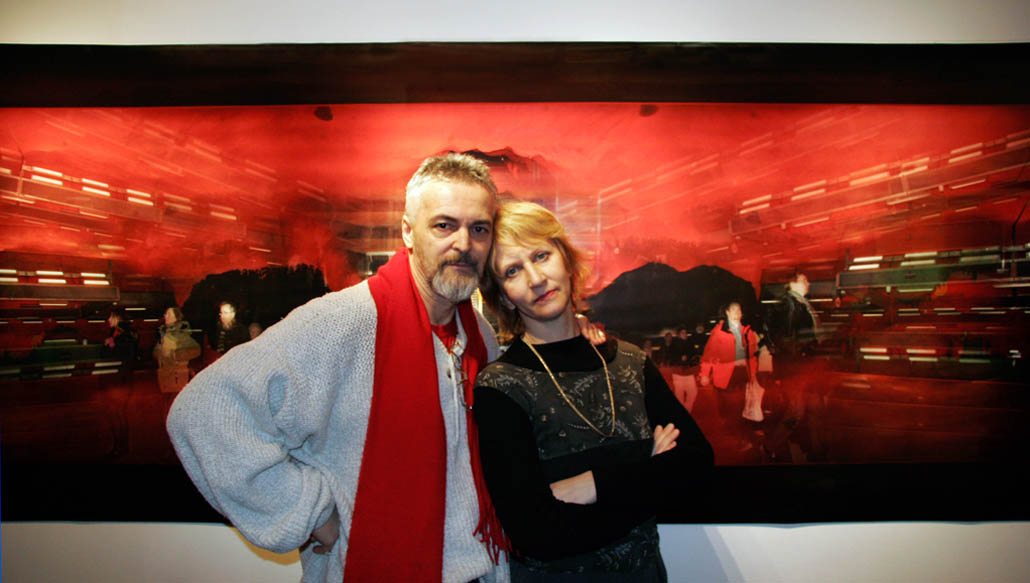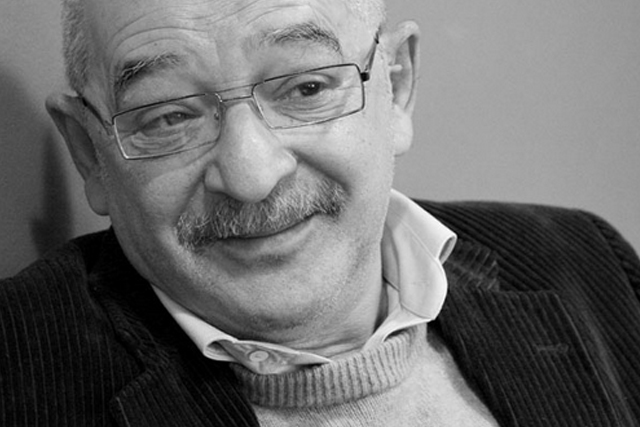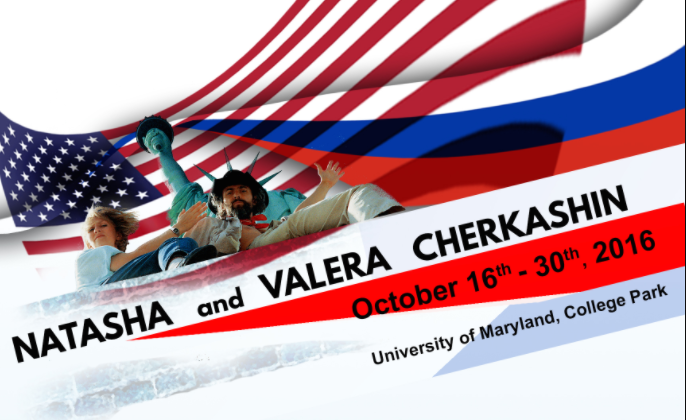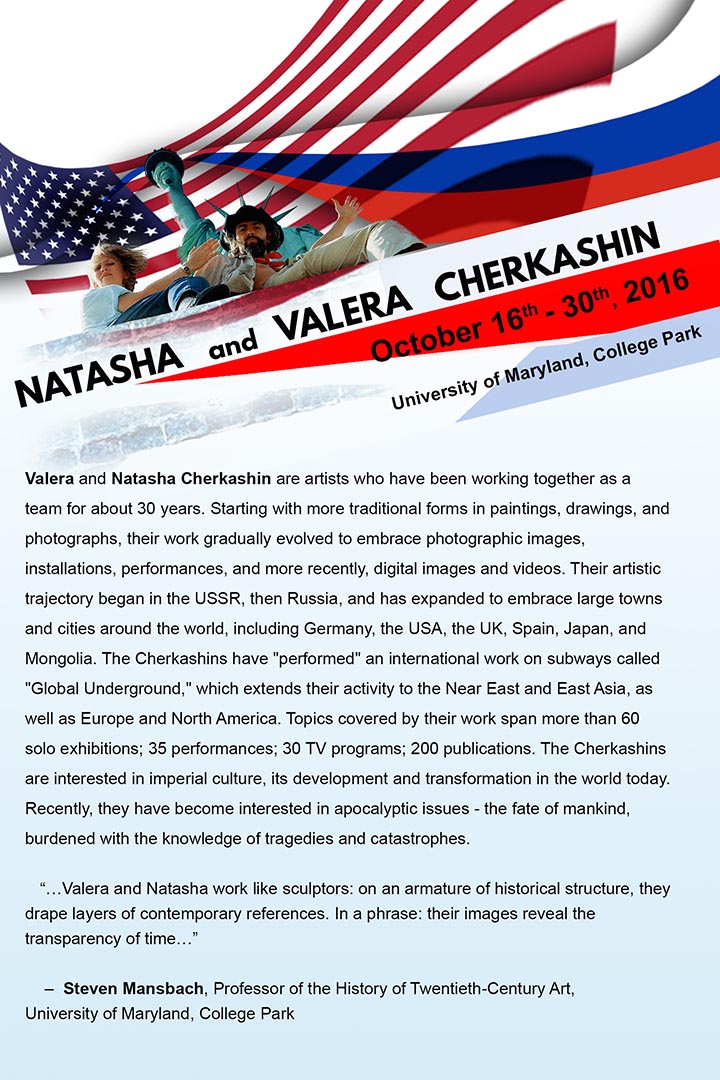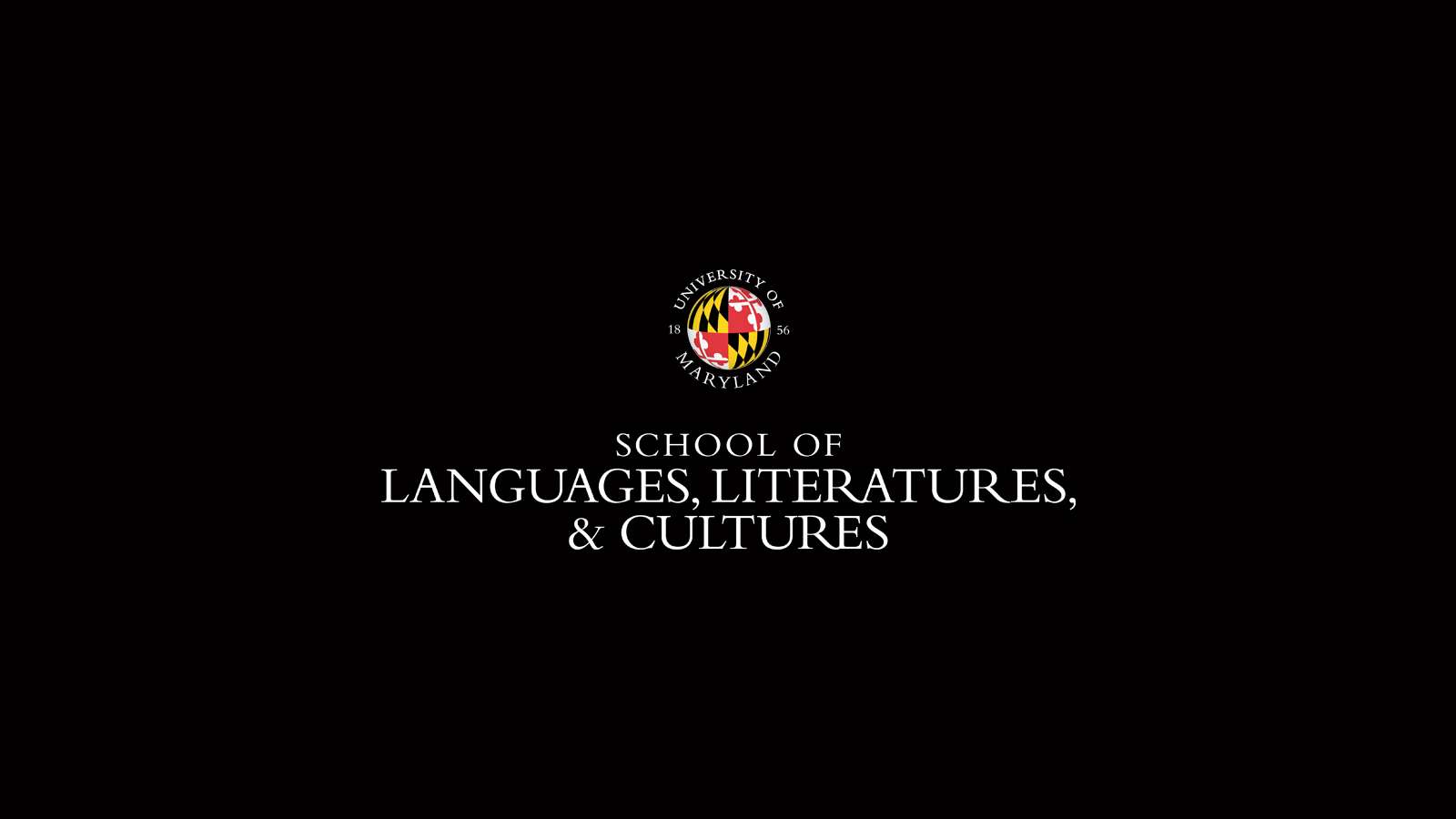Maya Brin Residency: Conference Art into Public Spaces
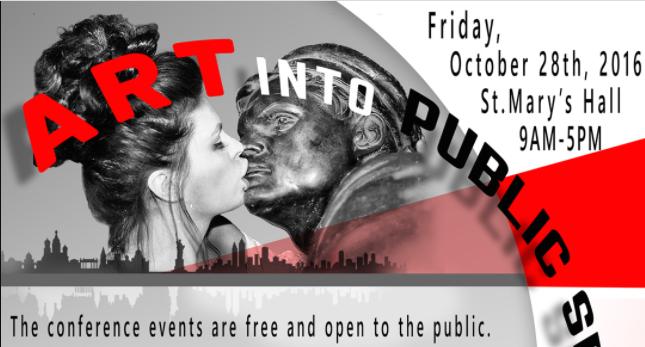
Maya Brin Residency: Conference Art into Public Spaces
This conference will explore new trends, tendencies, and practices in reevaluating and reenvisioning public spaces and communities in Russia during the early twenty-first century. The Cherkashins will present their views regarding the recent resurgence of interest-in Russia and beyond-in the role of art in the creation, maintaining, and empowering of the "public space."
Participants
- Valera and Natasha Cherkashin, Maya Brin Residents
- Aneta Georgievska-Shine, Department of Art History & Archeology, University of Maryland
- Michael Kunichika, Department of Slavic Languages & Literatures, Harvard University
- Alla Rosenfeld, Department of Art History and Department of Slavic Languages & Literatures, Rutgers University
- Jane Sharp, Department of Art History and Zimmerli Art Museum, Rutgers University
- Sven Spieker, Comparative Literature Program, University of California, Santa Barbara
- Aleksandra Shatskikh, Independent Scholar, New York
Moderated by Steven Mansbach, Department of Art History & Archaeology, University of Maryland
Conference Program
8:30 Breakfast
9:00 Welcome & Introductory remarks
9:30 – 10:15 am
Alla Rosenfeld, Art History Department and Department of Slavic Languages and Literatures, Rutgers University
“Art and Protest in Putin’s Russia: Performances of the Voina group.”
The Pussy Riot protest performances in Putin’s Russia, which just a few years ago made news headlines all around the world, was not an isolated instance of post-Soviet art being noticeably critical of the regime. This paper discusses the radical and controversial performances of the Voina group, one of the most successful Russian art groups at raising public attention and transgressing the sphere of art. Staging various performances, Voina acted against the police, FSB, courts, and government. This paper demonstrates how the Voina group's art engages in political and social protest, expressing the frustration and discontent felt by large groups of post-Soviet society. It also focuses on the controversy surrounding the subsequent nomination and awarding of the prestigious State Innovatsiia (Innovation) Prize, presented by the Ministry of Culture through the State Center for Contemporary Art, to the Voina group in the Spring of 2011. It was sensational for a federal art institution to reward artists who were accused of breaking the law. The presentation aims to initiate a discussion on the following issues: Can the interpretation of a work of art and its aesthetics be isolated from its social context? Was awarding the Innovation Prize to Voina a political act by the jury? How successfully have the Voina group’s interventions in the public sphere played a role in communicating messages to wider sectors of the Russian population?
10:30 – 11:15 am
Michael Kunichika, Department of Slavic Languages and Literatures, Harvard University
"Repertoires of Erasure: Damnatio memoriae in the Soviet and Post-Soviet Public Square"
From protests about Calhoun College at Yale University to those about the Woodrow Wilson School at Princeton, names and naming are ideological flash points on American campuses. What does one do with such chafing monuments in public space? Should statues be taken down? Names erased? Schools or buildings renamed? Though such questions are being urgently asked across campuses today, they have a deeper chronology and broader geography. And, indeed, perhaps few countries have greater experience with grappling with public monuments than the former Soviet Union and now contemporary Russia. This paper essays the various ways by which post-Soviet art elaborated modes of engaging with the past through its monuments and toponyms. In so doing, it entered into a genealogy of damnatio memoriae—the condemnation to oblivion—that we find across a range of cultures and times, while also furnishing us with a broader repertoire by which to refashion both monuments and our relationships to them.
11:30 am – 12:15 pm
Aneta Georgievska-Shine, Department of Art History and Archaeology, University of Maryland
“Just(ified) Vandalism: Macedonia's Government Project to Rebuild History and the Citizen Revolt it Provoked, 2016”
Several years ago, the government of the Republic of Macedonia embarked on a highly controversial and hugely expensive project of "urban renewal" of the capital city, Skopje. Most of this "renewal" consisted of large monuments of "historic" figures and quasi-classical facades applied over existing buildings. My presentation addresses the ways in which the government goal of giving the capital a new face - and a new history - backfired through the "Colorful Revolution," a grass-roots movement in which diverse groups of citizens deface these monuments with paint bombs and graffiti in order to express their revolt against both this project and numerous other, much more serious abuses of the rule of law in this fragile democracy.
12:30 – 1:30 pm Lunch
1:30 – 2:15 pm
Jane Sharp, Department of Art History and Zimmerli Art Museum, Rutgers University
“The Ephemeral Object of Russian Conceptual Art”
My presentation will consider the various mediums of conceptual art created in Moscow, especially those that draw on images of the city, and its role in shaping a sense of community among unofficial artists. If canonical conceptual art in the West challenged the viewer by replacing visual access to the image with commentary on its determining role within art institutions, Russian artists, deprived entirely of institutional support, developed sophisticated visual-material oeuvres to complicate their audience's understanding of the environment in which they lived. In their various projects, artists as diverse as Andrei Monastryski, Igor Makarevich, and the Cherkashins have deployed photographs and other ephemeral visual traces of their immediate surroundings to shape a personal, responsive space within the larger rhetorical cityscape of Moscow. I consider several pairings of visual works that help us to understand the particular appeal of such strategies from the 1970s to the present.
2:30 – 3:15 pm
Sven Spieker, Comparative Literature Program, University of California, Santa Barbara
“This Is Not Art: Towards a Genealogy of “Street Art” in Russia and Eastern Europe”
My paper proposes to explore some trajectories of street art in Russia, delve into some historical constellations, and ask what might distinguish street art in both the Soviet and the post-Soviet era from its Western counterparts. One focal point will be the politics of/in Russian street art, from early 20th-century Futurism to the Chto delat’ collective, Pussy Riot, and the destructive activism of Petr Pavlensky. I will attempt to show that the orientation towards the “street” is crucially important for understanding the impulses behind non-academic Russian and Soviet art production during the late 19th to the 21st centuries.
3:30 – 5:00
Roundtable with Valeri and Natasha Cherkashin, Maya Brin Residents and Aleksandra Shatskikh, Independent Scholar
Moderated by Steven Mansbach, Department of Art History and Archaeology, University of Maryland


